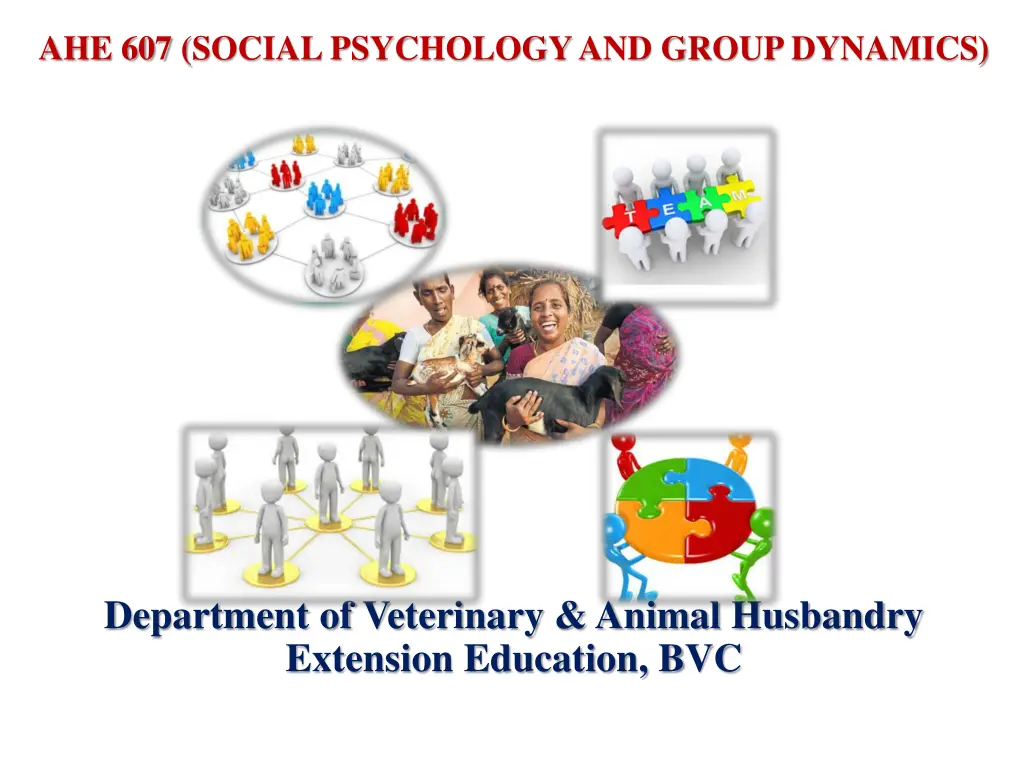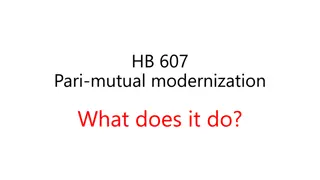
Understanding Group Dynamics in Rural Development and Social Change
Explore the concepts of group dynamics, rural development, and social change in the context of veterinary and animal husbandry extension education. Topics include group structures, processes, conflicts, and the importance of groups in achieving goals. Discover why people join groups and the benefits they provide in terms of security, status, self-esteem, affiliation, power, and goal achievement.
Download Presentation

Please find below an Image/Link to download the presentation.
The content on the website is provided AS IS for your information and personal use only. It may not be sold, licensed, or shared on other websites without obtaining consent from the author. If you encounter any issues during the download, it is possible that the publisher has removed the file from their server.
You are allowed to download the files provided on this website for personal or commercial use, subject to the condition that they are used lawfully. All files are the property of their respective owners.
The content on the website is provided AS IS for your information and personal use only. It may not be sold, licensed, or shared on other websites without obtaining consent from the author.
E N D
Presentation Transcript
AHE 607 (SOCIAL PSYCHOLOGY AND GROUP DYNAMICS) Department of Veterinary & Animal Husbandry Extension Education, BVC
Topics covered Topics covered Concept and types of groups; Typology and importance in rural development Group structures - attraction, coalition, communication and power. Processes in group development and group identity. Factors affecting group performance; Conflicts in groups; Group belongingness.
What is a Group dynamics? Group dynamics refers to the attitudinal and behavioral characteristics of a group. Group dynamics concern how groups form, their structure and process, and how they function.
Rural development Rural development Development is the process of improving the quality of life and economic well-being of people living in relatively isolated and sparsely populated areas. Rural development actions are mainly and mostly to development aim for the social and economic development of the rural areas (moseley & malcolm, 2003)
Need: It is the gap between what is and what ought to be. Change: Refers to an alteration in the social order of a society. Social change may include changes in nature, social institutions, social behaviours, or social relations. Why Group is necessary for Change Kurt Lewin s law of change: It is usually easier to change individuals formed into a group than to change any one of them separately
Why Do People Join Groups?
Security: Joining groups reduces insecurity of standing alone Status: Inclusion in a group viewed important by others provides recognition and status to its members Self-esteem: Groups can provide people with feelings of self worth. Affiliation: Groups fulfill social needs through regular interaction. Power: Group actions enable in achieving what one can t individually. Goal Achievement: Pooling talent, knowledge and power is needed to accomplish particular tasks.


